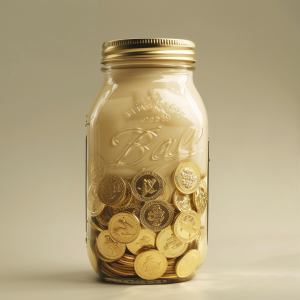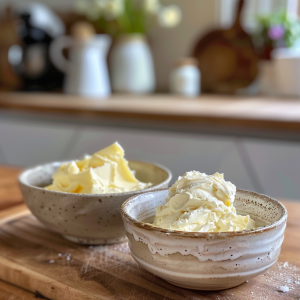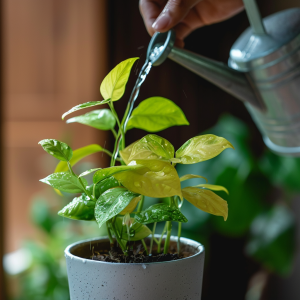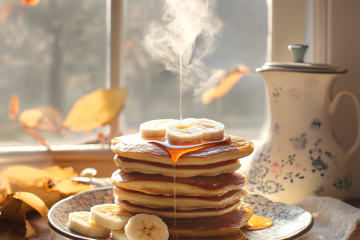
Whey is liquid gold
Whey: The Liquid Gold That’ll Make You Say “No Whey!”
Hopefully you’ve experienced the joy of making your own cheese or yogurt. If you have, you no doubt have found yourself with a bunch of whey leftover. Well if you’ve been pouring your whey down the drain, you’re literally washing away liquid gold. (and it’s really bad for the environment, too as too much whey can pollute waterways and harm aquatic life) But I’m about to share with you how you can use every part of that milk. So put down that strainer and pay attention, because we’re about to embark on a whey-cool journey (sorry, not sorry for the pun).
Types of Whey: The Good, The Bad, and The Salty
- Sweet Whey: The overachiever of the whey world with a pH of 5.6 or higher. It’s like the straight-A student of cheese byproducts.
- Acid Whey: The rebel with a pH of 5.1 or lower. It’s got an attitude, but we love it anyway.
- Salt Whey: The one that never skips a sodium day. It’s salty, but aren’t we all sometimes?
Pro tip: Real whey is not the powdered stuff you find in those muscle-building shakes. They’re about as interchangeable as a Ferrari and a bicycle – both’ll get you places, but the ride is very different. You could dehydrate your whey and use it strictly as a protein drink additive, but it won’t have the enzymes and as much of the nutritional benefits.
Whey: The Nutritional Superhero

Whey is full of nutrition
Whey is packed with more good stuff than your grandma’s vitamins – we’re talking protein, vitamins, minerals, and enzymes. It’s like a superhero, minus the cape and questionable spandex outfit. It features the natural macronutrients of carbohydrate (4.8 percent), protein (0.8 percent) and fat (0.3 percent), as well as water (93 percent) and ash (0.5 percent). The carbohydrate part consists of mostly the milk sugar lactose, and the main fat is phospholipid. Whey calories run from 59 for acid whey to 66 for sweet whey in a single cup.
Liquid whey also has many micronutrients. These nutrients include minerals like potassium, calcium, phosphorous and zinc. There are also digestive enzymes, milk proteins and peptides including, in decreasing amounts:
- Beta-lactoglobulin
- Glycomacropeptide
- Alpha-lactalbumin
- Bovine serum albumin
- Immunoglobulins
- Lactoferrin
- Lactoperoxidase
Storing Whey: Because Hoarding Whey is Totally Normal
Before you start filling your bathtub with whey (please don’t), know that you can store it in an airtight container for 3-6 months in the fridge. You can also freeze it, which is perfect for those “I might need this someday” moments we all have.
Now, let’s dive into the “wheys” (last pun, I promise) you can use this awesome stuff:

Make butter from whey
Culinary Magic Whey Tricks
- Bread Making: Swap water for whey in your baking. Your bread will be so good, it’ll make store-bought loaves cry. The abundant amino acids and important minerals in whey make it an ideal additive to bakery products. A February 2014 report in the Journal of Food Quality showed that 13 taste testers liked the appearance, taste and odor of whey bread.
- Lacto-fermentation: Use raw whey to ferment veggies. It’s like a science experiment, but tastier.
- Grain Soaking: Add whey when soaking grains. Your digestive system will thank you, possibly with interpretive dance. According to one of my favorite books, Nourishing Traditions, depending on your recipe, several tablespoons or more can be added to your grain and legume preparations to make them more digestible
- Cooking Liquid: Use whey to cook pasta, potatoes, or rice. It’s like giving your carbs a flavor jacuzzi.
- Soup Base: Add whey to soups and stews. It’s chicken soup for the soul, but better.
- Whey Lemonade: Make drinks that’ll make your neighbor’s lemonade stand go out of business.
- Mozzarella Stretching: Use hot whey for stretching mozzarella instead of using your microwave. It’s like yoga for cheese.
- Gjetost: Make this sweet cheese by reducing whey. It’s like cheese alchemy.
- Lacto-fermented Soda: Make probiotic-rich soda. It’s the fizzy drink that loves you back.
- Cheese Brine: Store cheese in whey brine. It’s like a spa day for your fromage.
- Butter from Foam: Make butter from sweet whey foam. Because why not?

Water your houseplants with whey
Non-Culinary Whey Wonders
- Plant Fertilizer: Water plants with diluted whey. Just don’t go full strength, unless you want to turn your garden into a cheese-scented wasteland. (using the acid whey will turn your hydrangeas blue)
- Pet Nutrition: Add whey to pet food. Your dog might start quoting Shakespeare, results may vary.
- Meat Marinade: Create marinades that’ll make your meat so tender, it’ll fall off the bone and do a little dance.
- Skin Toner: Use acid whey as a skin toner. It’s like a face gym, but less sweaty.
- Hair Rinse: Give your hair a whey rinse. You might smell like cheese, but your hair will be fabulous.
- Cleaning: Clean with diluted whey. It’s like giving dirt an eviction notice.
- Rust Removal: De-rust tools with whey. It’s like time travel for your rusty wrench.
- Compost Activator: Supercharge your compost. Your worms will throw a party.
Remember, different wheys have different superpowers. Use them wisely, and you’ll be the MacGyver of the dairy world.
So, the next time you’re elbow-deep in curds, remember that the whey is not just a byproduct – it’s the beginning of your next great adventure in self-sufficiency. Who knew saving the world could be so delicious?


